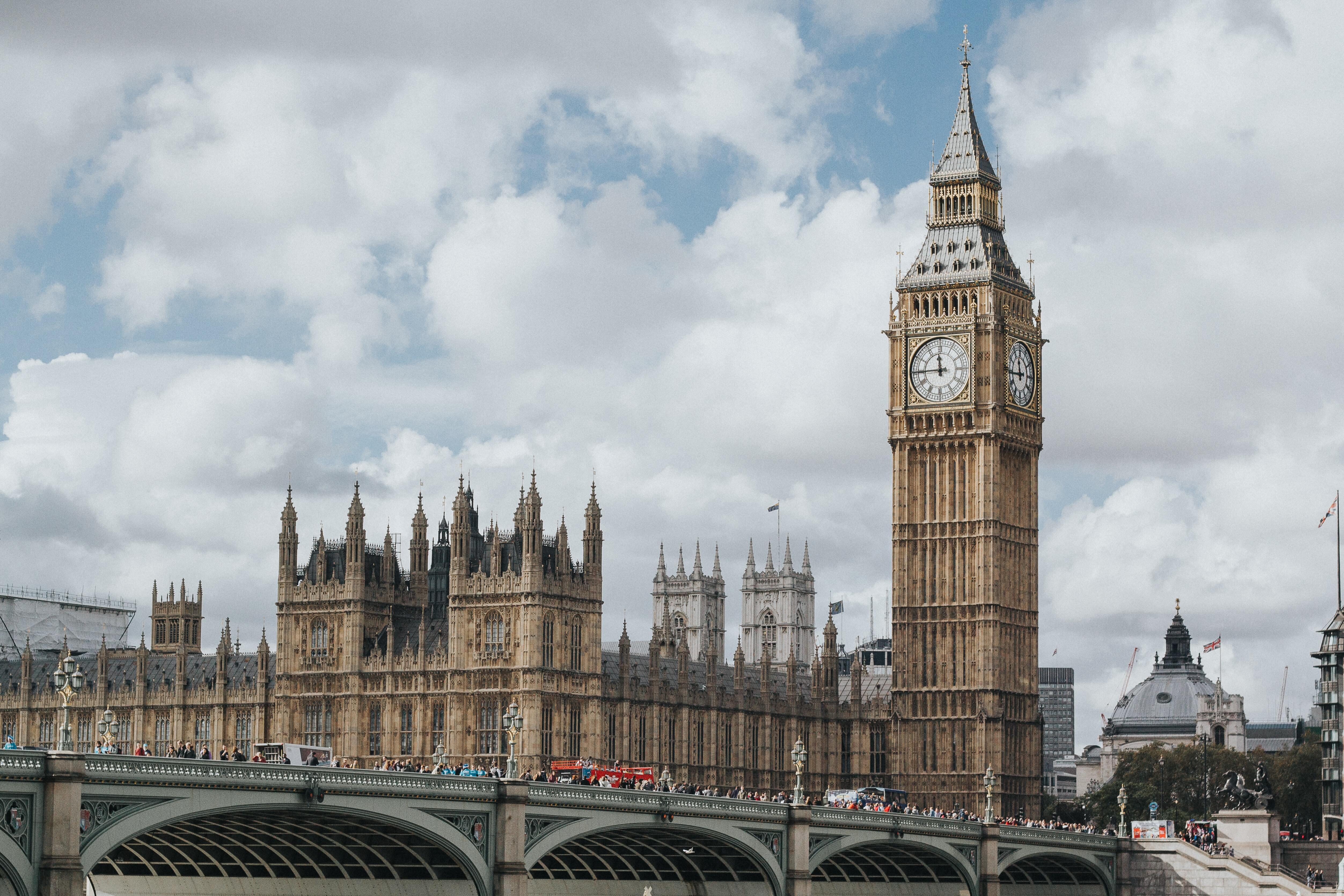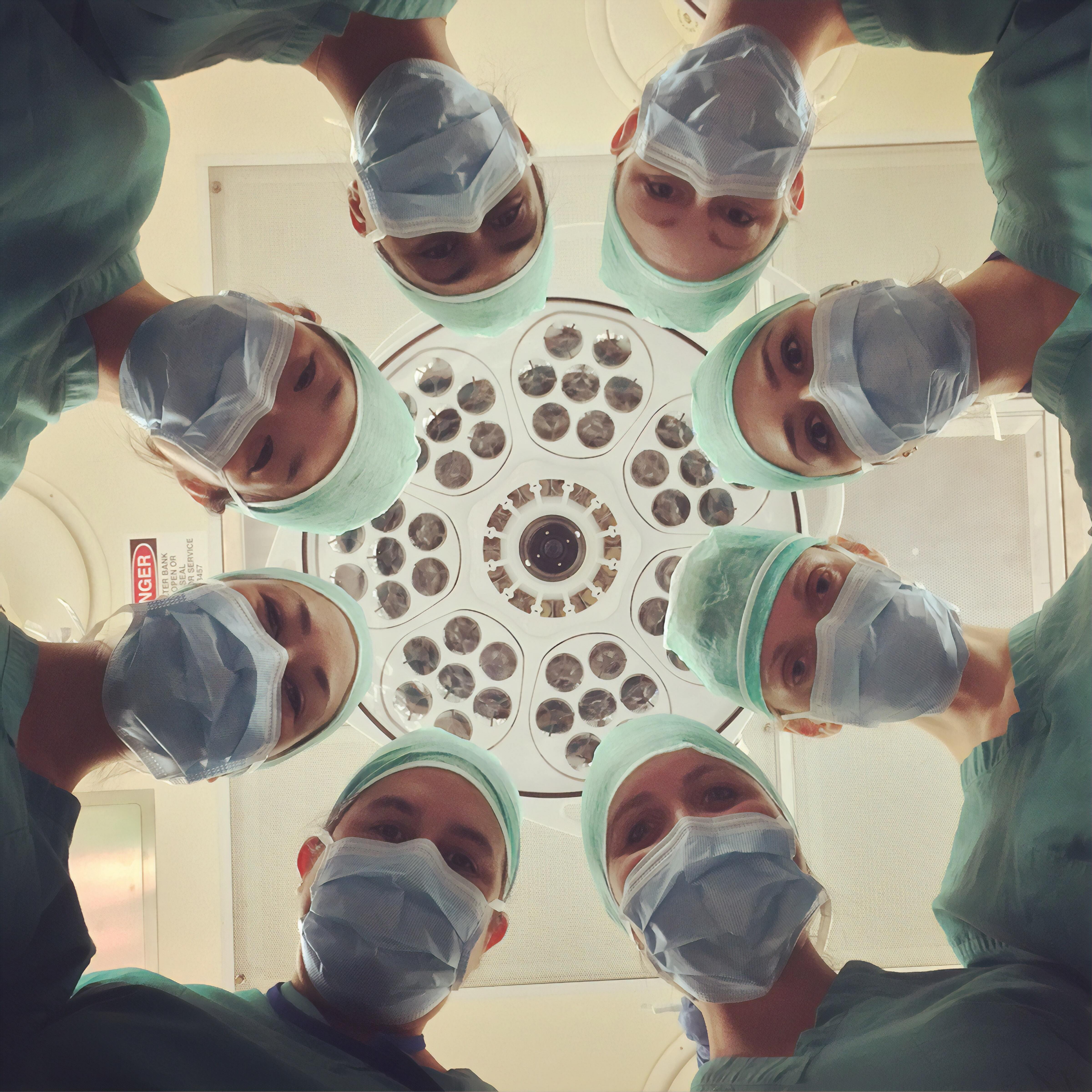Is Health Insurance Right For You?

Introduction
The Hong Kong healthcare system is composed of two sectors; a private track, and a government sponsored public track. The private sector offers numerous options and luxurious perks, but comes at a very high cost. The public sector, subsidized by the Hong Kong government, is provided to eligible residents at a very low fee. However, the public sector faces a number of growing problems including overcrowding, long wait times and excessive bureaucracy.
In order to address problems within the public sector, the Hong Kong government launched a health reform in 2008. Split into two sections, it aimed to enhance public-private partnerships, shorten wait times, and a whole plethora of other promises. Not much progress has been made and, as a result, healthcare costs in Hong Kong remain very high.
The true cost and quality of the healthcare services offered in Hong Kong are made clear in comparison against those of the United Kingdom and the United States.
In Hong Kong, unlike many other countries, private healthcare is an optional luxury, and not a necessity. At the core, the medical standard for both public and private sectors are quite similar.This makes choosing between the public and private sector extremely difficult, and there are many factors one should consider, including availability, resources, facilities, and services.
Furthermore, the exact prices of procedures and surgeries within Hong Kong private hospitals are extremely difficult to determine. There are numerous mandatory and/or optional charges that can amount to a very hefty price tag. This non-transparency of private service prices further complicates the decision between the public and private sector, as direct price comparisons cannot be made.
Despite the cost confusion, one thing that that holds true is that the luxuriousness of private healthcare also brings about a financial burden. Since private healthcare prices are extremely high, those who opt for the private sector should strongly consider health insurance. Generally, insurance plans can be tailored to fit specific needs; with higher premiums, normally meaning higher coverage received. However, there are many adjustments that can be made (such as outpatient plans, area of coverage, dental, deductibles) that can drastically alter both the premium and coverage.
The Hong Kong Healthcare System – How It Works
Hong Kong healthcare is split into a dual track system; private and public.
The Private System
Hong Kong has thirteen registered private hospitals. While prices for private treatments and procedures are significantly higher than those at government run facilities, the private system contains many luxurious perks (such as deluxe rooms and customer-friendly workers).
The Public System
Managed by the Hong Kong Hospital Authority, Hong Kong's public sector has 41 public hospitals, 47 specialist out-patient clinics, and 73 general out-patient clinics, all organized into seven clusters according to their locations.
Since the Hong Kong public healthcare system costs are subsidized by the government, quality health services are provided for eligible residents for a very low cost. A visit to a public hospital in Hong Kong will is a fraction of the cost at a private hospital. A few common Hong Kong public hospital's fees are listed in the chart below:
Service | Public Fees |
Accident & Emergency | $100 per attendance |
In-Patient (general acute beds) | $50 admission fee, $100 per day |
In-Patient (Convalescent, rehabilitation, infirmary & psychiatric beds) | $68 per day |
Specialist out-patient (including allied health services) | $100 for first attendance, $60 per subsequent attendance, $10 per medicinal item |
Day procedure and treatment at Clinical oncology Clinic and Renal Clinic | $80 per attendance |
General Out-Patient | $45 per attendance |
Dressing & Injection | $17 per attendance |
Geriatric, Psychiatric & Rehabilitation day hospital | $55 per attendance |
Community nursing (general) | $80 per attendance |
Community nursing (psychiatric) | Free |
Community allied health services | $64 per attendance |
The Hong Kong health care system provides high quality medical services for “eligible persons” for a very low cost. To be “eligible”, you must be:
- Holder of Hong Kong Identity Card issued under the Registration of Persons Ordinance
- A child under 11 years of age with Hong Kong resident status
- Other persons approved by the Chief Executive of the Hospital Authority.
This sector acts as a safety net for the whole community, ready to “catch” those who cannot afford private healthcare services.
Problems the Hong Kong Public Health Care System Faces
The public healthcare system, featuring low costs and exemplary standards of care, is, unfortunately unsustainable, and facing a number of growing challenges.
Unstable Funding
Each year, the Hong Kong government devotes a considerable portion of its revenue to subsidize public health care (around 17%). This percentage increases every year, and from 2007 to 2012, it went up by 40%. Though the government has been successful in maintaining high quality public health care for a number of years, the estimated future costs are unsustainable. In 2012 alone, the government spent around HKD $45 trillion (or USD $5.8 billion) funding the public health care system. On the whole, Hong Kong spends about 4.6% of GDP on health care.
The following chart demonstrates the fee that patients pay, the actual cost the government pays, and the percentage of services that are subsidized within the public healthcare system:
Service | Public Fees | Cost To Government | Percentage Subsidized |
Accident & Emergency | $100 per attendance | $700.00 | 86.00% |
In-Patient (General Acute Beds) | $100 per day | $3,790.00 | 97.00% |
In-Patient (Convalescent, rehabilitation, infirmary & Psychiatric beds) | $68 per day | $1,460.00 | 95.00% |
Specialist Out-Patient | $100 (1stattendance) $60 (subsequent attendance) | $530.00 | 81-89% |
Specialist Out-Patient (drug) | $10 per drug item | $120.00 | 92.00% |
General Out-Patient | $45 per attendance | $250.00 | 82.00% |
The cost of each procedure is significantly higher than the fees paid by patients, and the percentage of the cost subsidized by the government is incredibly high. Such a large percentage is unfeasible for the Hong Kong government to continue to sustain, and therefore the current public healthcare funding is unstable.
Aging Population

Like many other countries, Hong Kong has a rapidly aging population. The ratio of the working age population (15-64) to the elderly population (65+) is currently at 6:1. In a decade (2023) it will become 5:1, and in 20 year's time (by 2033), it will decrease to 3:1. As the population ages, the elderly will require more healthcare services, and therefore more funds will have to be allotted towards providing healthcare. Additionally, as the population ages, the working age population will decrease, which will decrease the number of taxpayers. As the cost of public healthcare creeps higher and higher, it will burden an increasingly smaller group.
Wait Time
Since services and procedures are offered at such a low cost, public hospitals are constantly crowded, busy, and overburdened. Patients who don't have emergencies or time-sensitive illnesses are often rescheduled. These practices can create a wait-time of a few weeks, months, or even years depending on the procedure.
The following chart details the wait time for different procedures at the Ambulatory Care Center at the Tuen Mun Hospital.
Specialty | Number of Weeks |
FM Triage Clinic | 1 week |
Psychosomatic Clinic | 1 week |
Adolescent | 2 weeks |
Obstetrics - Antenatal | 4 weeks |
Neurosurgery | 6 weeks |
Thoracic Surgery | 6 weeks |
Vascular Surgery | 17 weeks |
Paediatrics & Adolescent Medicine | 22 weeks |
Orthopaedics & Traumatology | 28 weeks |
Surgery | 30 weeks |
Medical & Geriatrics | 39 weeks |
Gynecology | 41 weeks |
Pediatric Surgery | 55 weeks |
Ear, Nose, Throat | 96 weeks |
Plastic Surgery | 108 weeks |
Due to the increasing demand for supply and the growing waiting times for procedures and services, the Hong Kong Hospital Authority placed a triage system at specialist out-patient clinics. Medical appointments are arranged according to the urgency of the patient's clinical condition at the time of referral. Patients are classified into three categories:
- Priority 1 (urgent)
- Priority 2 (semi-urgent)
- Routine category
The Hospital Authority arranges for doctors to attend to priority 1 and 2 as soon as possible. However, for the patients in the “routine category,” the waiting time is much longer, which is where wait times of 55 weeks (more than 1 year), 96 weeks (almost 2 years), and 108 weeks (more than 2 years) can occur.
Rising Costs of Medical Technology

Medical technology refers to procedures, equipment, and processes by which healthcare services are delivered. This includes medical and surgical procedures, drugs and medicinal items, medical devices (like CT scanners), and support systems (such as electronic medical records). There is very little in the field of medicine that is not affected by new technological developments.
Today's medical technology is more effective, more advanced, and incurs much higher costs than ever before. The demand for technological diagnostic facilities is ever increasing, and innovative medical advances push the price tag up every year (costs for diagnostic tests increase at an average annual rate of 7% a year.) Hong Kong's medical machines and facilities are modern, up to date, and constantly being renewed. These machines are costly to acquire, and need to be consistently upgraded, which then increases the costs to government funds each year.
The Hong Kong Government's Health Reform
In response to the problems in the current health care system, the government initiated a reform program that was divided into two stages.
Stage One
Launched in 2008, stage one of the healthcare reform focused on revising the public healthcare sector. It's main objectives were to:
- Enhance Primary Care
Primary care is defined as the first contact between patients and doctors (eg. first consultations; meeting with physicians, general practitioners). By focusing on primary care and taking necessary preventative measures, the demand for expensive, specialist-led hospital care can be reduced. - Promote Public-Private Partnerships
By negotiating a contract between the public and private sectors, both divisions can benefit from this partnership. The two sectors will become more interconnected, which in turn will foster cross-sector training. Through this partnership, the private sector will also gain a greater number of patients, which will help alleviate the public sector's burden. - Develop Electronic Health Record (eHR) Sharing
The electronic health record is a consolidated, electronic file that contains a patient's general information, medical history and any health-related details. By providing lifelong health records of individual patients, switching between different levels or different sectors of care will be smoother and easier - Strengthen Public Healthcare Safety Net
The Hong Kong Government will continue to subsidize public healthcare services, and provide an essential safety net for the population (especially those who lack the means to pay for their own healthcare). The government also aims to improve the current public healthcare (eg. tackling long wait times).
Stage One Reform Update
In 2010, within two years of launching the healthcare reform, the Hong Kong government has increased the health budget from $30.5 billion to $36.9 billion, and invested over $15 billion in healthcare infrastructure. The progress within each objective is described below:
- Enhance Primary Care
The Primary Care Working Group (composed of practitioners from both public and private sectors, as well as patient representatives) has formulated and established a new development strategy. This will then be taken forward by the Primary Care Office. - Promote Public-private Partnership (PPP)
A number of pilot projects with the aim of delivering healthcare services through PPP are underway (eg. purchase of private healthcare services, direct subsidization of patients for private healthcare etc.). These projects will be closely monitored. - Develop Electronic Health Record (eHR) sharing
The eHR Office, IT experts from the Hospital Authority, and the private sector are all working together to implement eHR programs. - Strengthen Public Healthcare Safety Net
The government has increased funding for the Hospital Authority (from $28.0 billion to $32.7 billion). In addition, $1 billion has been donated to the Samaritan Fund to help those in need.
Stage Two – Health Protection Scheme
Also in 2010, with stage one underway, the Hong Kong government decided it was time to launched stage two of the health reform. Also known as the Health Protection Scheme (HPS), stage two is focused on regulating private health insurance. Operating on a voluntary basis, the Health Protection Scheme encourages individuals who are able and willing to subscribe to private health insurance. It's main objectives are as follows:
- Provide Choices
The HPS aims to keep options open to those who are willing to pay for private health insurance and private healthcare services. - Shorten Wait Times
Relieve public queues by enabling more people to choose private services, and focus public healthcare on target groups. - Stay insured
Enable those with health insurance to stay insured and continue to make premium payment at older age, and meet their healthcare needs through private services. - Consumer Protection
Enhance transparency, competition for consumer protection in private health insurance and private healthcare services.
The results and progress of the Health Protection Scheme are yet to be seen. With a multitude of endless consultation documents and plans, one might have expected a drastic improvement or even a difference in both the public and private Hong Kong healthcare system. While the government is making progress in reforming the Hong Kong healthcare system, the average person in Hong Kong remains largely unaffected by these developments.
The health care reform hasn't changed much in Hong Kong. It doesn't look like it will either, at least not in the near future.
Comparing Hong Kong's Health Care System to Other Countries
The current setup of Hong Kong's system can more clearly be seen in comparison to the healthcare system of two other countries: the United Kingdom and the United States. When juxtaposed against two well-known extremes (a largely public system and a mostly private-based system), the healthcare system in HK becomes more easily understood.
The United Kingdom

According to a recent Commonwealth fund report, the UK's health care system is the most efficient in the world. “The UK has relatively short waiting times for basic medical care and non-emergency access to services after hours, but has longer waiting times for specialist care and elective, non-emergency surgery.”
Hong Kong vs. United Kingdom
With the healthcare services available via the NHS, it is understandable that the UK's private sector is much smaller than the public sector, though it is growing. This is compared to Hong Kong, where although public health services are offered, a larger percentage of residents opt for private healthcare.
United Kingdom | Hong Kong | |
Number of people who have private insurance | 6.9 million people | 2.42 million people |
Percentage of the population | 11.10% | 34.00% |
In the United Kingdom, 6.9 million people have private medical insurance, equivalent to approximately 11.1% of the UK population (as of January 2011). This is compared to Hong Kong, where 2.42 million people have private medical insurance, which constitutes around 34% of the population. Based on the figures and percentages above, it can be concluded that residents in the United Kingdom are much more dependent on the public system, and private medical insurance is not as prominent as it is in Hong Kong.
Hong Kong vs. United Kingdom (Prices)
The chart below compares the prices of certain medical procedures in different countries.
Procedure | Hong Kong | United Kingdom | Spain | South Africa | New Zealand |
CT Scans, Brain | $2,320.00 | $1,358.00 | $923.00 | $2,327.00 | $2,405.00 |
MRI Scan | $12,580.00 | $2,560.00 | $1,784.00 | $8,316.00 | $4,298.00 |
Maternity: Normal Delivery** | $60,340 | $20,488.00 | $17,572.00 | $15,787.00 | $18,510.00 |
Maternity: Caesarian-Section** | $74,187.00 | $34,406.00 | $24,026.00 | $26,757.00 | $36,594.00 |
Routine Office Visit | $300.00 | - | $85.00 | $194.00 | - |
Colonoscopy | $5,570.00 | $6,859.00 | - | - | $6,703.00 |
All prices are in HKD
** Only includes hospital and physician fee, no additions (ex. Epidural charges, midwife, spouse presence, any complications, and so on)
The most expensive column, highlighted in yellow, lists the prices found in the private sector of Hong Kong's healthcare system. This is compared to the adjacent column, in which it is clear that the cost of the same procedures in the United Kingdom are considerably lower.
In comparison to the United Kingdom (a mostly public healthcare system), Hong Kong has a larger percentage of people who opt for the private healthcare sector, and are less dependent on government subsidized services. However, when comparing Hong Kong to a primarily private system (the United States), some different conclusions are drawn.
The United States

The United States has the most expensive health care system in the world. Outside of a limited provision for old age and low income individuals, the United States provides almost no public health care offerings, and therefore, American health services are largely private. As a result, a free market economy has developed, and prices are driven up by demand. Despite the open and competitive private system, the United States still spends more on healthcare than any other industrialized nation in the world.
Hong Kong vs. United States
Though Hong Kong spends less than the United States on healthcare, the Hong Kong government is still able to provide public health services, while the United States operates solely on private healthcare services. Since private healthcare is so much more prominent, the United State's limited “safety net” cannot catch many of those who cannot afford necessary medical services.
However, when comparing the private sector of Hong Kong's healthcare system to the largely private United States healthcare system, many similarities can be drawn:
- Both systems are driven by demand and adhere to free market principles
- No “standard” or set price regulates the system. Depending on various factors such as the doctor's credentials and experience, room type, prices can differ drastically
Hong Kong vs. United States (prices)
The following chart shows the price of certain medical procedures in different countries around the world.
Procedure | Hong Kong | United States | Spain | South Africa | New Zealand |
CT Scans, Brain | $2,320.00 | $12,971.00 | $923.00 | $2,327.00 | $2,405.00 |
MRI Scan | $12,580.00 | $22,273.00 | $1,784.00 | $8,316.00 | $4,298.00 |
Maternity: Normal Delivery* | $60,340 | $129,192.00 | $17,572.00 | $15,787.00 | $18,510.00 |
Maternity: Caesarian-Section* | $74,187.00 | $204,071.00 | $24,026.00 | $26,757.00 | $36,594.00 |
Routine Office Visit | $300.00 | $1,365.00 | $85.00 | $194.00 | - |
Colonoscopy | $5,570.00 | $20,380.00 | - | - | $6,703.00 |
All prices are in HKD
*Only includes hospital and physician fee, no additions (ex. Epidural charges, midwife, spouse presence, any complications, and so on)
Though Hong Kong's costs for these medical procedures are higher than those found in Spain, South Africa, or New Zealand, the costs in the United States are significantly higher than in any other developed economy.
Hong Kong vs. United States (quality)
With such expensive healthcare in the United States, it is expected that the level of healthcare services, and therefore the general “healthiness” of the country, to be very high. However, with the exception of certain states, Hong Kong's overall healthcare quality is much higher than that of the United States'.
The chart below compares the life expectancy and infant mortality rate between Hong Kong and the United States.
Hong Kong | United States | |
Female Life Expectancy (years) | 84.6 | 80.4 |
Male Life Expectancy (years) | 78.8 | 75.3 |
Infant Mortality Rate | 2.4/1000 | 6.9/1000 |
While the healthiness of a country cannot be accurately portrayed in life expectancy and infant mortality rates, these data points do provide a good indication of a population's general well-being. The figures above show that life expectancy for both male and females are both clearly higher in Hong Kong, and the infant mortality rate is lower than United States'.
However, unlike both the United Kingdom and United States, Hong Kong has both a prominent private and public sector. Making the decision between private or public healthcare can often be confusing and difficult.
Choosing Private or Public Health Care Services
Generally, standards of care within the Hong Kong public healthcare sector, or government subsidized services, are of a very high standard. Doctors, surgeons, and specialists (while perhaps not the top professionals of their field), are extremely skilled in handling medical procedures or services. The difference between the private and public sectors is slight, and unlike the United States, private healthcare services in Hong Kong are not a necessity, but an optional luxury.
While the price gap is a glaring difference between public and private healthcare services, the following should also be considered:
Availability
Public
The high subsidization rate and quality services offered by HK public hospitals continues to attract patients into the system, overburdening these facilities. Constantly bustling and full, non-emergency or non-time-sensitive issues are often rescheduled at a much later date.
Wait Time | Specialist Out-patient Cases | Cataract Surgery | Hyperplasia Surgery |
Currently | 20 weeks | 3 years | 2-3 years |
In 7 years | 76 weeks | 6 years | 4-5 years |
The chart above shows the (already lengthy) current wait time for certain procedures, and how this grows over the next 7 years. Going to a public hospital will inevitably incur hours of queuing and an ever increasing wait-time.

Private
Since the private sector provides for much fewer patients, procedures can be conducted at any available time, contrasting sharply with the public hospitals. Long waiting periods are not a problem in the private sector.
Resources and Public Clinics
Public
While the public sector has numerous hospitals and out-patient clinics, there are a lack of subsidized specialist clinics. For example, focusing solely on public dental clinics, the Hospital Authority manages 11 (of which just one is on Hong Kong Island, and two serving the whole of Kowloon.)
On March 10, 2013, the South China Morning Post reported on a group of elderly queuing outside a dental clinic in the early hours of the morning. Due to the high cost of going to a private practice dental office, many are forced to endure a long and painful wait for a “consultation chip”. The lucky few who do receive consultation chips, after hours of waiting, do not describe treatment well. Elderly Tang says: “It's not even a proper check-up at the government dental clinics, you just go in and get the bad tooth taken out. If there are two, they pick the worse one and ask you to queue up again next day to take the second one out.”
As seen from the arduous wait-time that patients endure and the lackluster treatment they receive, it is evident that the Hong Kong Public Hospitals have an insufficient number of resources and specialist clinics. Though this example only focused on one specialist, similar patterns are surfacing from other such professional fields as well.
Private
Hong Kong has hundreds of private dentists, many more clinics than the public sector does. Similar to availability in public hospitals, private clinics care for far fewer patients than public hospitals do, and therefore, are able to attend to a patient’s medical needs sooner, and treat them with better care.
Getting to “know” your doctor
In addition to the number of resources and clinics, the professionals operating within such institutions are even more important. Visiting or consulting with a familiar doctor is an optional luxury that private healthcare may bring. At private clinics, the patient has the privilege ofseeing the same doctor each visit, and there are certain benefits associated with that:
1. Medical History
Private
A doctor who is familiar with their patient's condition is able to more specifically tailor the treatment to each individual's needs. This includes:
- Prescriptions –
A consistent doctor will already know of any medications their patient is ingesting (this includes even vitamins), and will able to modify treatment according to prior knowledge of how each patient reacts to certain drugs (and any side effects that may occur). - Medical Diagnostic Tests –
A doctor who is familiar with a patient's medical history may be able to waive certain medical diagnostic tests.
Public
A patient going to a public hospital or public clinics will be assigned to whichever doctor is on call and available. The chances of meeting the same doctor twice is very low. Therefore, certain advantages of going to a private doctor are not applicable:
- Prescription –
A new doctor will be foreign to a patient's medical history, and may lack an in-depth understanding of their medical past. Unaware of all of the drug items their patient is ingesting, or how their patients react to prescriptions. - Medical Diagnostic Test –
Such tests may be administered again (even if previously undertaken or unnecessary), as a new doctor lacks prior knowledge of a patient's medical history.
An article published in the New York Times on May 2, 2011 details how important and cost-efficient familiar doctors are. Patient Mary Pat Dorsey asserted that Dr. Sroka had saved her thousands of dollars in unnecessary trips to the emergency rooms due to his intimate knowledge of his patient.
2. Comfort
Private
A personal doctor will know more about their patient's everyday habits; information such as the area in which his patient resides, dietary habits, sleeping schedule, hobbies etc. A private doctor may also be aware of life changes; these may include divorce, death in the family, and/or relocation. When diagnosing a patient, these details can become extremely important.
Public
It can be extremely difficult telling a stranger such intimate details of your life, and many patients choose not to. However, such information is vital.
Quality of Materials and Treatments
Private
Private doctor clinics are often spacious, cushy, and lavishly decorated. In private services, the patient is the customer. Workers operate on a “patient-oriented” mindset; more polite and perhaps more gentle.
Public
The world of public health care is quite different. Public hospitals are swarming with patients. Ina place focused on efficiency, doctors can diagnose patients in under five minutes, and surgeons can perform routine surgeries “with their eyes closed”. Hospital workers deal with the same illnesses and procedures day-in and day-out.
As a patient in a public hospital, workers will present you with a “quick-fix” situation. They'll give you medications to stop the pain, patch you up, and send you on your way. With so many in need, it's all they have the time to do.

Although both the private and public sector can provide quality healthcare services, there are differences in the quality of materials used. The decision between public and private healthcare then rests upon what each individual is looking for.
Levels of Accommodation
Often times, certain procedures will require a patient to remain in the hospital overnight. Known as “in-patient” treatment, the level of accommodation, or room types and offerings, should be factored into the decision between private and public.
Private
Certain suites at private hospitals are infinitely more extravagant than ones at public hospitals. If it's luxury you're looking for, deluxe accommodations are available at private hospitals (at an exorbitant price). The private hospitals in Hong Kong usually offer a range of rooms including general wards (3-6 beds), semi-private rooms (2 beds), private rooms (single bed), and some hospitals even have deluxe suites.The four most luxurious hospital rooms in Hong Kong are listed below:
- The Ellen Suite
Hospital: Hong Kong Sanatorium & Hospital
Price per night: HKD $19,900 ($2,565 USD)
Named in honor of the late Dr. Ellen Li, this private suite covers an area of over 2,000 square feet. Located on the 37thfloor, the view from this suite is of the gorgeous Happy Valley skyline. Spacious and cozily decorated, some of its features include: a sitting area with a 70 inch HDTV, 8 person dining area, open kitchen with refrigerator and microwave, another adjoining companion room with its own private lavatory and washroom, auto lights, touch screen control, local, Now TV & Satellite TV channels, free wireless broadband internet, “magic eye” security system, and much more. - 36/F Suites
Hospital: Hong Kong Sanatorium & Hospital
Price per night: HKD $10,390 ($1,340USD)
Located on the 36thfloor of the Sanatorium, this deluxe suite gives new meaning to the phrase “deluxe hospital accommodation”. Spacious and luxurious, this suite overlooks the Happy Valley skyline. Though smaller and less lavish than the Ellen suite, this suite has its own sitting area, dining area, private washrooms, companion bed, HDTV, refrigerator, microwave, and more. - The Pearl Room
Hospital: Hong Kong Adventist Hospital
Price per night: HKD $5,800 ($748 USD)
Lavishly and glamorously decorated, the pearl room has a private bathroom, and separate sitting and dining rooms. It is stylishly furnished with a sofa set, wardrobe, refrigerator, broadband service with wireless access, cable and satellite television systems, and even free access to a Jacuzzi. - The “VIP Room”
Hospital: Matilda International Hospital
Price per night: HKD $4,000 ($516 USD)
This room looks more like a nice hotel room than a hospital room: crown molding, a private balcony, and even room slippers. Perhaps the best part is that the catering is from the Shangri-La hotel chain!
Extreme decadence aside, rooms in private hospitals are generally more appealing than those in public hospitals. The patient should decide whether the extra luxurious perks are worth the extra cost. (Especially expectant mothers booking maternity rooms!)
Public
Public hospitals' accommodations sharply contrast with private's. As a public patient, only general wards are available. A room contains numerous beds (ranging anywhere from 3-10).
The price difference between private and public hospitals are made clear in the chart below. It shows the lowest possible cost of a single night in a private room (single bed):
Hospital Name | Cost |
Precious Blood Hospital | $1,200.00 |
Canossa Hospital (Caritas) | $2,550.00 |
HK Baptist Hospital | $2,800.00 |
Matilda International Hospital | $2,970.00 |
HK Adventist Hospital | $2,980.00 |
HK Sanatorium & Hospital | $3,180.00 |
Public Hospital (Eligible Citizens) | $150.00 |
Public Hospitals (Non-eligible Citizens) | $4,680.00 |
The difference in staying at a public and private hospital is made clear.While private hospital rooms are starting to resemble hotel rooms, these rooms come with a very hefty price tag. Whether or not the extra costs are worth the luxurious perks, it is a decision each patient must make.
Non-transparency of Prices – The Issue with Hong Kong Healthcare
It is near impossible to obtain a pre-determined price, or even an estimate, on the costs of any procedures or packages offered at private hospitals. There are always optional and/or mandatory additional charges. This complicates the choice between private and public, as a direct price comparison cannot be made.
Perhaps the best example of this can be seen through maternity packages. Given the nature of pregnancy and giving birth, many unexpected complications may arise during the process.
Maternity Packages
Though private hospitals have a list of maternity “packages” offered, they are not an accurate estimate of the total fee of delivering a baby. Though each maternity package at each hospital is different, they generally include the following:
For the Mother:
- Delivery suite charges, routine materials, dressing and maternity nursery care
- Assisted delivery instruments and fetal monitoring equipment
- Entonox and basic medication
- Breastfeeding instruction by International Board Certified Lactation Consultant
- Breast-pump
- Three standard meals a day
For the Baby:
- Nursery and breastfeeding room
- Routine nursing care and monitoring
- Breast milk substitute, baby clothing and napkins
- Infant warmer and newborn resuscitation service
- Transport incubator from Delivery Suite to Nursery
- Baby bed warmer (On the first day)
- Newborn vaccinations: Hepatitis B vaccine and BCG
- Vitamin K1 injection
- Routine blood tests
- Use of jaundice meter
Souvenirs
- Digital photograph of newborn baby and a photo album
- Baby gift
The following chart shows a comparison between different private hospital's lowest possible costs for different maternity packages for a private (single bed room).
Hospital | Routine Maternity | Caesarian Section |
HK Sanatorium & Hospital | $32,200.00 | $46,000.00 |
HK Baptist Hospital | $43,800.00 | $49,800.00 |
Canossa Hospital (Caritas) | $47,800.00 | $57,900.00 |
HK Adventist Hospital | $48,180.00 | $63,200.00 |
Matilda International Hospital | $52,000.00 | $73,000.00 |
Precious Blood Hospital | $76,160.00 | $88,060.00 |
Public Hospitals (Non-eligible Citizens)* *general ward (no private room) | $39,000 booked $90,000 non-booked** |
**Non-booked: Cases or patients who have not undergone any antenatal checkup during pregnancy
The figures above exclude many childbirth necessities, and therefore the prices of the maternity packages are well below the total cost to have a baby. Some other additional procedures or services (that have additional fees) may include:
Additional procedures/services | Charges | Hospital |
Doctors, obstetricians, anesthetist, pediatrician fees | Cannot be determined | They are private practitioners independent of the hospital |
Epidural charges | Epidural anesthesia during labour $7,300.00 Spinal Anesthesia during labour $2,900.00 Induction of labour $6,700.00 | Matilda International |
Collection of cord blood for stem cell storage service | $1,100.00 | Matilda International |
Circumcision | $4,200.00 | Matilda International |
Hearing test for newborn | $1,000.00 | Matilda International |
Attendance of spouse | $600.00 | Canossa Hospital |
Use of forceps/vacuum | $650.00 | Canossa Hospital |
Cardiotocogram | $450.00 | HK Baptist |
Ante-Natal Care | $1,463.00 | HK Baptist |
Post-Natal Care | $1,612.00 | HK Baptist |
OT Theatre Charge (Including basic anesthesia medication and materials) | $6,500.00 | HK Baptist |
Caesarean Section Care | $2,683.00 | HK Baptist |
Delivery Room Service | $6,527.00 | HK Baptist |
First Stage Care | $2,291.00 | HK Baptist |
Epidural Analgesia | $6,259.00 | HK Baptist |
Blood Group (T&S) | $480.00 | HK Baptist |
Swabbing in Maternity | $79.00 | HK Baptist |
Neonatal Immunizations (Medicine not included) | $353.00 | HK Baptist |
Medicine (BCG & Hepatitis B Vaccine 1stdose, Vitamin K1) | $338.00 | HK Baptist |
Breast Feeding Education | $233.00 | HK Baptist |
Formula Feeding (Per Day) | $98.00 | HK Baptist |
Neonatal Routine Care (Per Day) | $360.00 | HK Baptist |
New Born Care | $2,088.00 | HK Baptist |
Neonatal Screening (TSH/G6PD) | $475.00 | HK Baptist |
With so many additional fees (most of which are necessary), realistically, the maternity package prices are not close to the total cost of giving birth in Hong Kong. Since giving birth differs so drastically case-by-case, exact prices are hard to determine. However, a rough estimate of giving birth (maternity package + basic additional procedures) in Hong Kong is easily upwards of $100,000 without any complications.
In addition to childbirth, another example of the non-transparency of prices can be seen in the varying costs of surgeries and procedures.
Surgeries
It is even more difficult to obtain a pre-determined price or estimate on a surgical procedure, unless you are in consultation with a specific doctor and/or surgeon. Even then, prices can vary drastically, dependent upon:
- Room rate
In addition to the actual room cost, the doctor/surgeon fee is dependent upon the room type and charge. The exact same procedure performed by the exact same surgeon will cost differently dependent on the room type selected by the patient. - Time of procedure
Certain hospitals will charge more for procedures performed at “auspicious” times, this applies even to emergency situations. Any time outside of office hours (Monday to Friday, 9am-5pm) may cost more. - Surgeon experience
The only place in the world with standardized surgeon's fee is Malaysia. In Hong Kong, there is no set price of surgeon's cost. Dependent upon the surgeon's experience, reputation, and other various factors, the price associated with an individual surgeon's treatment may fluctuate. - Additional complications
Any unexpected complications will also increase the price of the procedure (any additional operations, medical equipment, extended room stays etc.)

Issues due to the non-transparency of hospital fees are not uncommon. On March 5, 2013, the South China Morning Post published an article detailing Bobbie-Ann Poulton's hefty bill. For a standard 30 minute procedure (including suturing for eight stitches and other services), the bill came to be a total of HKD $10,655. “They did not tell me the expected fee. If they had warned me of the price I would definitely not have had it done”, Poultonsaid.
With prices so easily dropped and raised, it's near impossible to get a price estimate from the hospital without consultation, even upon inquiry. The Hong Kong Sanatorium & Hospital, Matilda International Hospital, Canossa Hospital (Caritas), and Precious Blood Hospital all refused to give a price estimate for an appendectomy (a standard procedure) as the price varied among doctors. According to a separate South China Morning Post article, “the price disparity between different doctors could come to as much as tens of thousands of dollars.”
The non-transparency of hospital prices makes it extremely difficult to compare costs between private and public health care services.
Health Insurance in Hong Kong
Those who opt for private healthcare should strongly consider health insurance, as the costs for an emergency situation or even pre-booked treatments are incredibly high.
There are a number of insurance companies in Hong Kong. Perhaps the most well known are AXA, Allianz, Zurich, William Russel, and many more. Each of these companies offer numerous programs and different plans, at varying price points and varying coverage.
All Hong Kong health insurance plans cover
- In Patient (Hospitalization)
Most insurance plans will cover any in-patient situations (there may be sublimits).
These programs can be tailored to fit your needs, whatever they are. The higher the price of the premium (the fee that the customer pays), the higher the coverage received. However, by adjusting some categories that may seem unnecessary to you, costs can be lowered.
Below are a few optional categories that can drastically affect the price of the premium
- Out-patient
This includes clinics, specialists, prescription drugs/medications. As an optional add-on, this may include sublimits as well. - Cancer Coverage
Since cancer is such a prevalent and expensive threat, insurance companies may cover oncological expenses depending on the coverage of the plan.
- Out-patient
- Area of Coverage
The two most popular options are “Worldwide”, in which you can choose to receive treatment anywhere in the world, or “Worldwide excluding USA”, due to the extremely high cost of health care in the United States. Another less expensive option includes “Asia Only”. If international insurance coverage is still too costly, there are a number local plans that are available as well. - Room Type
Take note of the room type that insurance plans include. Depending on the price of the premium, some programs have “private” as an option, however some plans may only cover up to “semi-private”, or lower. - Dental
Some insurance plans do not include dental needs, as it is not a medical “risk”. Certain insurance plans, however, will cover up to a certain cost. - Maternity
The costs and complications of having a baby is extremely expensive. Maternity coverage is another optional choice for insurance plans. Most plans will include a “maternity waiting period” (usually 8-10 months). A female cannot be pregnant within the first 8-10 months of joining a new insurance plan, or the plan does not cover for maternity costs. - Age
As the age of the client increases, as does the insurance premiums (due to rising medical technology costs, more frequent health issues, and so on.) Each year, depending on your age, insurance premiums cost more and more. - Deductibles
A deductible is a portion of the fee of each health related expense that you will pay. The insurance plan will cover the remainder of the bill. The higher the deductible (the amount you pay for each expense), the lower the premium. Deductibles can drastically reduce the over premium cost.
The decision between private healthcare and public services can be difficult to make. Since public standards are relatively high, private services (and health insurance) are certainly not a necessity. After reading about the advantages of private health care, decide if such benefits are worth the higher cost.



